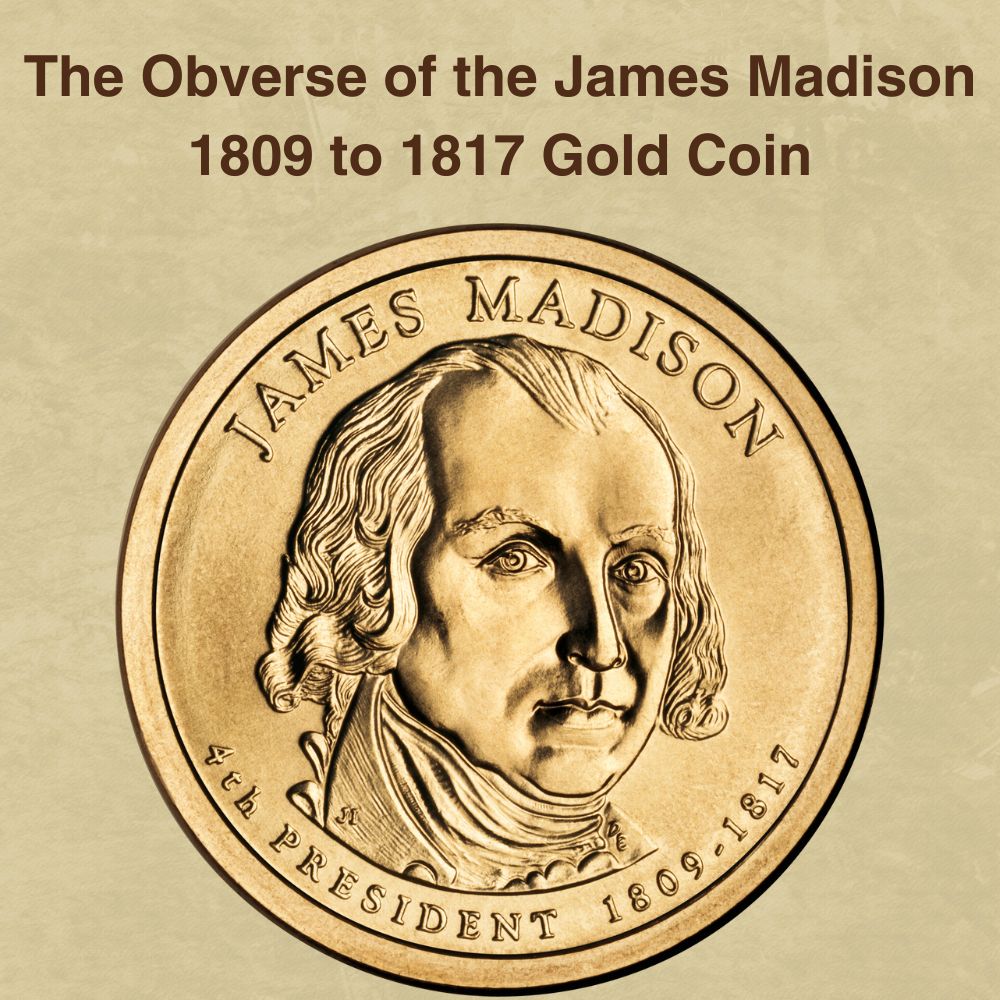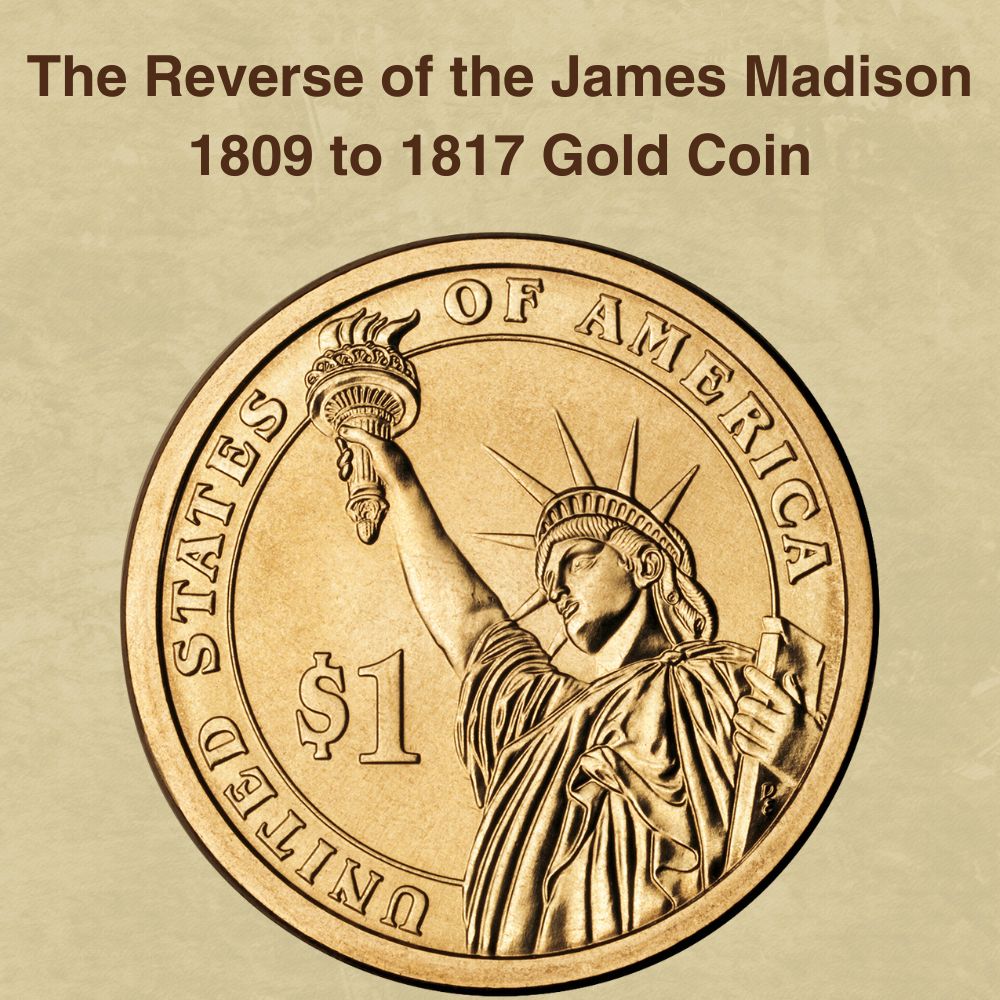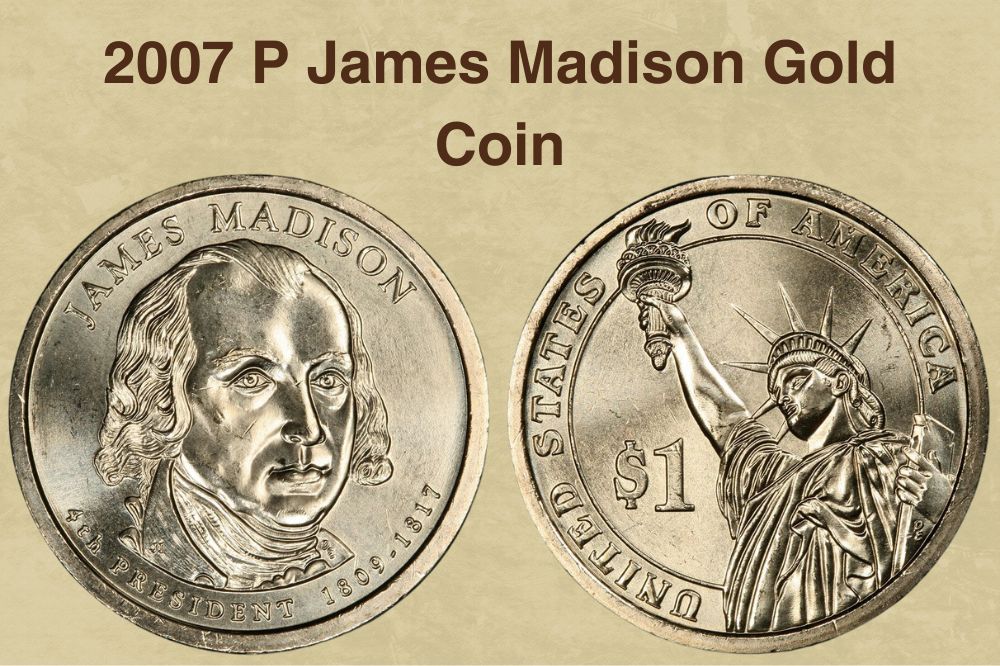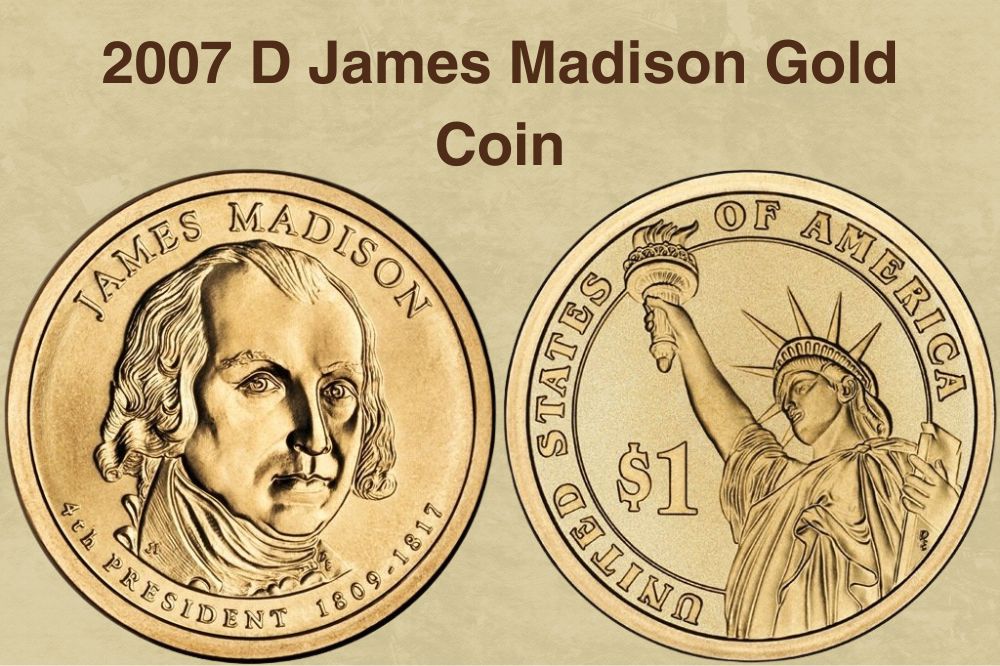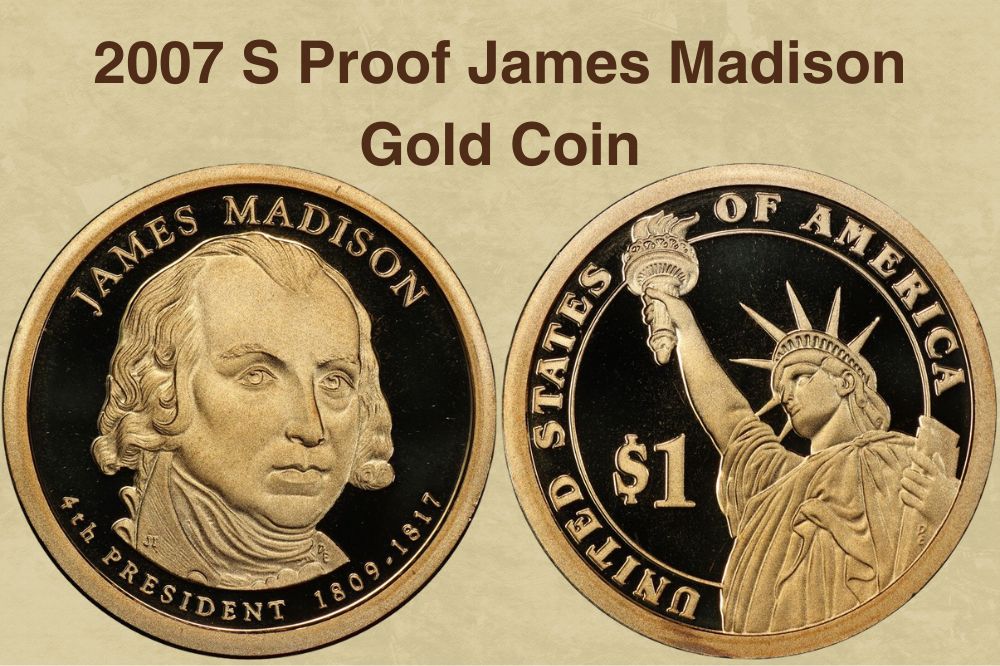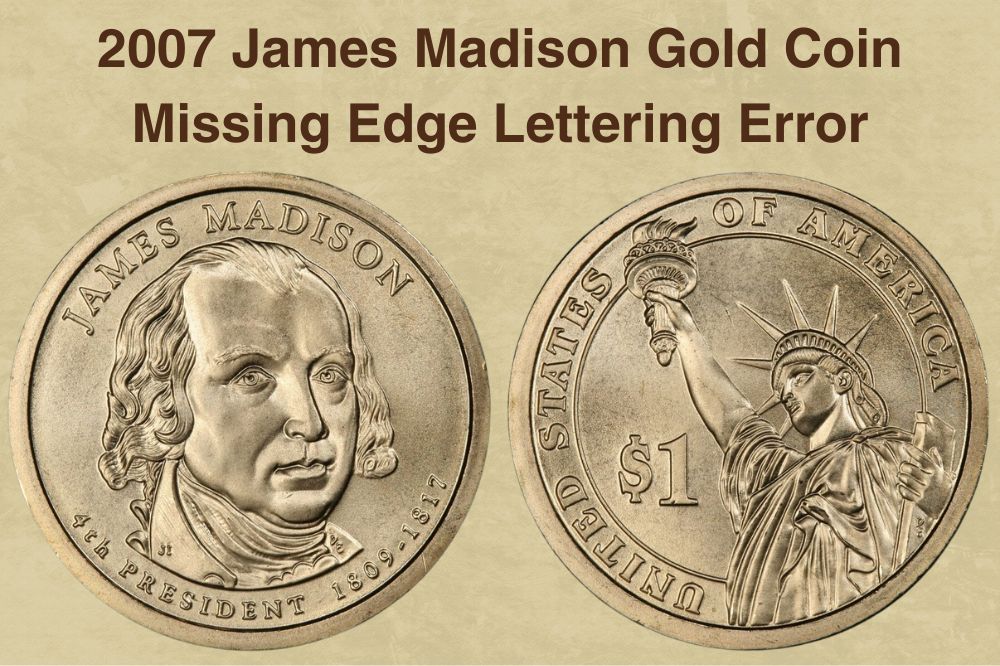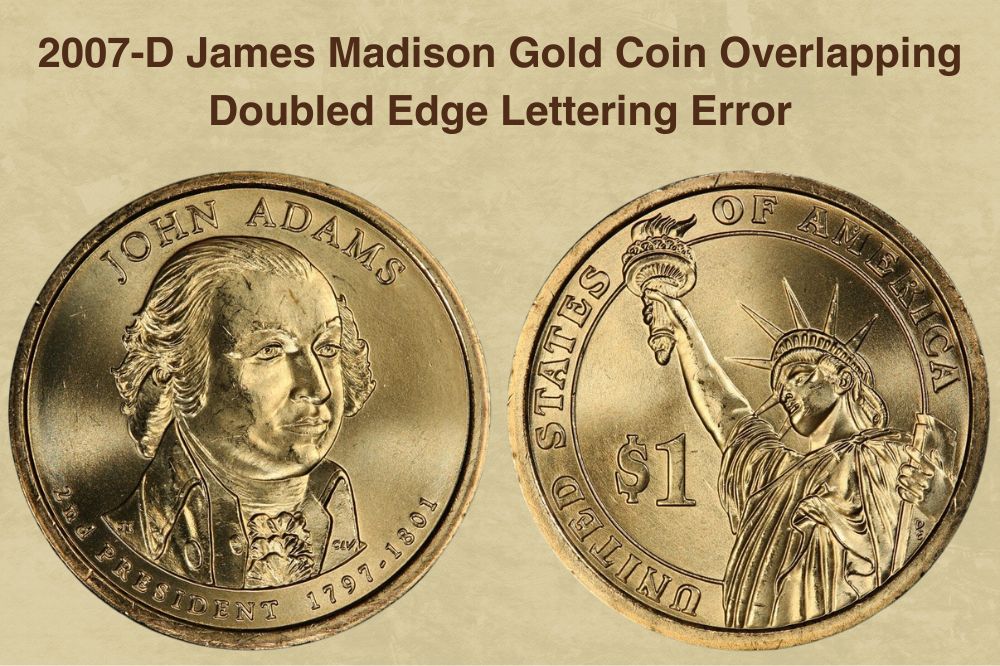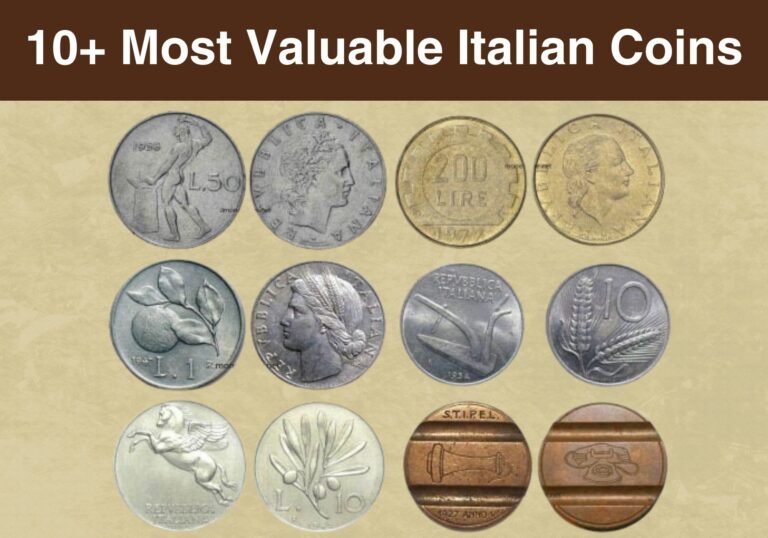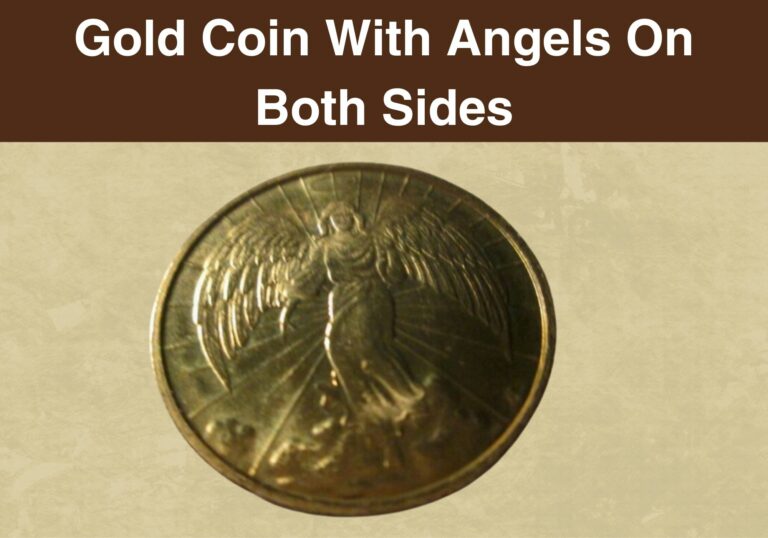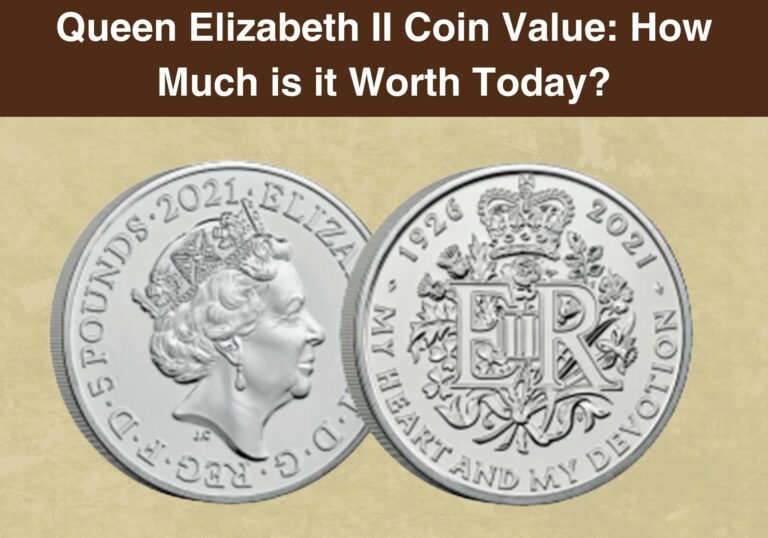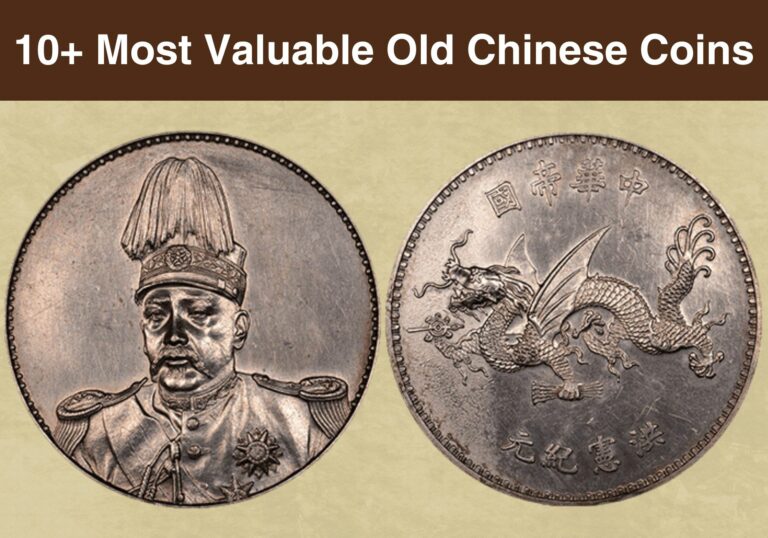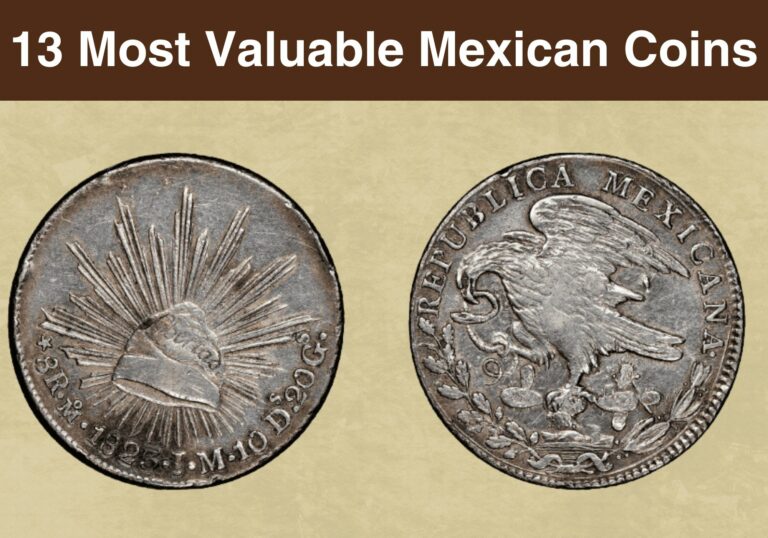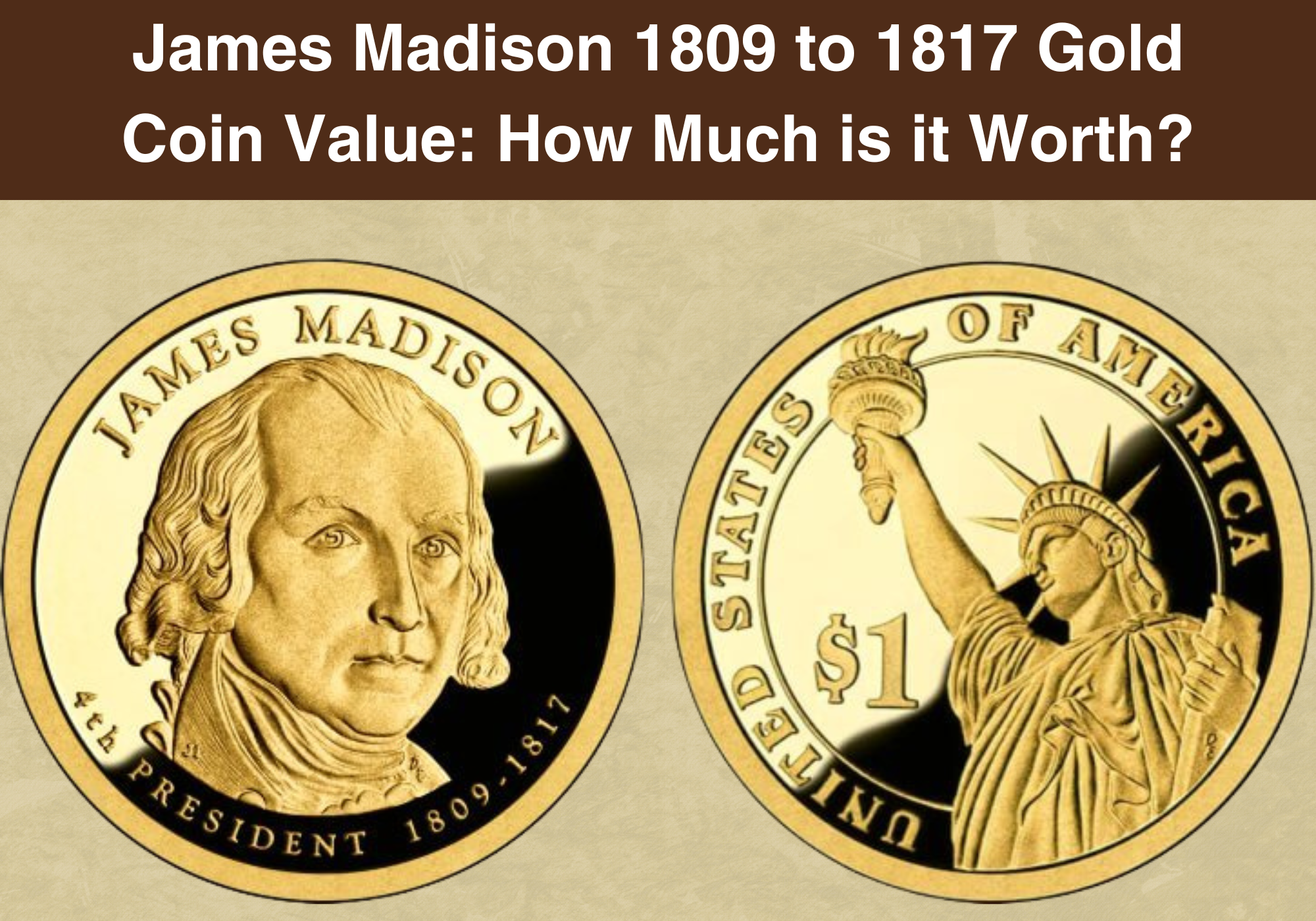
Coin Value Contents Table
- James Madison 1809 to 1817 Gold Coin Value Chart
- History of the James Madison 1809 to 1817 Gold Coin
- Features of the James Madison 1809 to 1817 Gold Coin
- James Madison 1809 to 1817 Gold Coin Value Guides
- 2007 P James Madison Gold Coin
- 2007 D James Madison Gold Coin
- 2007 S Proof James Madison Gold Coin
- James Madison 1809 to 1817 Gold Coin Grading
- James Madison 1809 to 1817 Gold Coin Errors
- FAQS
Are you interested in collecting the James Madison 1809 to 1817 gold coin?
Are you curious whether this Presidential Dollar is worth collecting?
We wrote this guide just for you, explaining everything you need to know about the 2007 James Madison gold coin value.
We will review the coin’s unique history, familiarize ourselves with the features, and figure out how to grade Presidential Dollar coins.
In the end, you will know the real value of a James Madison 1809 to 1817 gold coin and whether it is worth collecting.
So, let’s dive in!
James Madison 1809 to 1817 Gold Coin Value Chart |
||||
| Mint Mark | Good | Fine | Extremely Fine | Uncirculated |
| 2007-P James Madison Gold Coin Value | $1.05 | $1.05 | $1.05 | $40 |
| 2007-D James Madison Gold Coin Value | $1.05 | $1.05 | $1.05 | $40 |
| 2007-S Proof James Madison Gold Coin Value | – | – | – | $30 |
History of the James Madison 1809 to 1817 Gold Coin
The James Madison gold coin belongs to the Presidential $1 gold coin series. This special series ran from 2007 to 2016 and commemorated United States Presidents in the order they served.
Presidential one-dollar gold coins feature a similar reverse design, but the obverse shows the respective president’s portrait.
James Madison was born in 1751 in Orange County, Virginia. He attended the College of New Jersey, what is now known as Princeton, where he studied law, history and government.
Madison played a key role in the creation of the 1776 Virginia Constitution. He took up leadership roles in the Virginia Assembly and Continental Congress.
One of his most important contributions was in the ratification of the Constitution, where he wrote the Federalist essays alongside John Jay and Alexander Hamilton. His pioneering role earned him the apt title of the Father of the Constitution.
Other notable fetes attributed to Madison include the Bill of Rights, which he helped to create. He was a strong opponent of Hamilton’s financial frameworks, which, he argued, would concentrate wealth on the few. His opposition led to the Jeffersonian, also known as the Republican Party.
James Madison was elected president in 1808. Some noteworthy legislation enacted during his reign includes the Act of December 1812, which instructed the United States Mint to retain its Philadelphia location for an additional five years up to 1813.
The Act of April 1816 authorized the use of specific foreign silver and gold coins as legal tender for the payment of all debts in the country.
In the next section, we will explore the features of the James Madison $1 gold coin.
Features of the James Madison 1809 to 1817 Gold Coin
Understanding coin features is important whether you are collecting coins as a hobby or professionally.
This is the first step to determining how much your coin might be worth and what to look for in a coin that’s worth money.
So, let’s get right into it and learn about the features of the James Madison 1809 to 1817 gold coin.
The Obverse of the James Madison 1809 to 1817 Gold Coin
The obverse of the James Madison presidential $1 gold coin features a large portrait of our country’s fourth president. Madison faces forward as though introspectively peering into the future.
The inscription JAMES MADISON appears in an arch along the coin’s top edge. At the bottom are the words FOURTH PRESIDENT and the years he served, 1809 to 1817.
The Reverse of the James Madison 1809 to 1817 Gold Coin
When you turn over the coin, you are met with the beautiful Statue of Liberty, a colossal sculpture gifted to the United States by the people of France in 1886.
The reverse has two consecutive rings. The first inner one encircles the statute and the coin’s denomination, inscribed as $1.
The outer ring encompasses the words UNITED STATES OF AMERICA, etched along the entire circle.
This coin weighs 8.10 grams and measures 26.50 millimetres in diameter. Its metal composition comprises 88.5% Copper, 6% Zinc, 3.5% Manganese and 2% Nickel.
Other Features of the James Madison 1809 to 1817 Gold Coin
The James Madison presidential $1 gold coin has edge inscriptions, which add to its beauty and uniqueness.
Along the edge, you will find the words 2007, the year the coin was issued, and the mottos IN GOD WE TRUST and E PLURIBUS ENUM.
And, if you are wondering where the mint mark for the James Madison gold coin is, you can spot it along the edge as well. The mint mark might be a P or D, depending on whether your coin was minted in Philadelphia or Denver.
James Madison 1809 to 1817 Gold Coin Value Guides
Now that we’re familiar with the coin’s history and features, the most important question is: How much is a James Madison 1809 to 1817 gold coin worth? Is a James Madison gold coin worth a lot of money?
The value of a James Madison gold coin depends on factors such as the coin’s physical condition, rarity, mint mark, and the general market demand for the coin.
Overall, James Madison presidential gold dollar coins are not rare. Circulated examples are only worth their face value, but you can fetch a premium if you are lucky enough to own an uncirculated one.
Three varieties of the James Madison 1809 to 1817 gold coin were issued in 2007. These are the:
- 2007 P James Madison Gold Coin
- 2007 D James Madison Gold Coin
- 2007 S Proof James Madison Gold Coin
Let’s take a deeper look at the value of each variety.
2007 P James Madison Gold Coin
The Philadelphia Mint produced about 84,560,000 James Madison presidential $1 gold dollar coins in 2007.
Although this seems like a high mintage, the Mint had actually lowered the number of circulating presidential dollars by 20% in 2007, marking the James Madison gold coin as having the lowest mintage that inaugural year.
In circulated condition, your 2007 P James Madison gold coin is worth only its face value of $1.
The coin becomes slightly more valuable if uncirculated with few to no scratch marks, dings, or lustre loss. An example graded MS62 will fetch about $2.25, while a gem specimen with a shiny lustre can be worth as much as $40, although such examples are rare.
According to the Professional Coin Grading Service (PCGS), the most expensive 2007 P James Madison gold coin ever sold was graded MS68 and was auctioned by Heritage Auctions in 2016 for an impressive $61.
2007 D James Madison Gold Coin
The Denver mint also produced James Madison gold coins with the mint mark D. The Mint issued an estimated 87,780,000 of these presidential gold coins.
Circulated examples of the 2007 D James Madison presidential gold coins are worth only their face value. If you are lucky enough to own an uncirculated example, you might be able to sell it for good money.
For example, an uncirculated example graded MS65 can be sold for $10, while the rare gem graded MS67 is worth as much as $40.
A rare specimen graded MS67 was sold for an eye-watering $130 in 2016 on eBay, reports the PCGS.
2007 S Proof James Madison Gold Coin
In addition to the regular circulating coins, the U.S. Mint also produced James Madison proof gold coins. About 3,965,989 proof gold coins with the mint mark S came from the San Francisco Mint.
Proof coins are extra shiny as they are made from polished dies and planchets. They feature a smooth and flawless texture, sparkling fields, and intense devices and inscriptions.
According to PCGS records, the most expensive James Madison proof gold coin is a Deep Cameo (DCAM) graded PR70. It was sold for an impressive $127 at a 2008 Heritage Auctions sale.
The Mint also produced special mint sets. These coins have a satin, matte finish, and although they are not as high quality as proof sets, they are superior to regular circulating coins.
Special mint set coins will bear the mint mark P or D, and they are worth between $20 and $75, depending on their grade. A specimen graded SP69 was sold for $209 at a 2008 Heritage Auction sale, making it among the most expensive special strike 2007 James Madison gold coins.
James Madison 1809 to 1817 Gold Coin Grading
Presidential gold dollars, including the James Madison 1809 to 1817 coins, are historically significant and attract a lot of attention among collectors.
When grading these coins, pay attention to the condition. Your James Madison gold coin will fetch a premium in brilliant, uncirculated condition.
These coins start gaining a premium at grade MS67. Presidential dollars graded MS68 and above are extremely rare and can fetch more than the face value.
The real premium lies in the errors, such as doubled-edge lettering or inverted-edge lettering, among others. So, you should definitely pay attention to these varieties when collecting and grading your James Madison Presidential Gold Coins.
Check out this video for additional tips for grading your James Madison gold coin.
James Madison 1809 to 1817 Gold Coin Errors
Errors are inevitable during coin-making. Coins with noticeable errors may appear odd or peculiar, but sometimes, they can be worth a lot.
In fact, some collectors specialize in buying and selling error coins, some of which can be very lucrative.
When collecting James Madison Presidential $1 coins, there are a few stand-out errors you should look out for. If you happen to spot these error coins, you could sell them for a premium.
Here are the most valuable 2007 James Madison gold coin errors:
2007 James Madison Gold Coin Missing Edge Lettering Error
Some Presidential gold coins have a smooth edge, i.e., they lack edge lettering. These errors are extremely rare, and collectors are always keen to add these to their collections.
Presidential $1 gold coins undergo a two-step minting process. In the first step, blank planchets are struck on the obverse and reverse, and in the second step, the coins are transferred to an edge inscription machine.
The edge inscription machine may occasionally fail, resulting in gold coins with missing edge lettering. The most expensive 2007 James Madison gold coin with a missing edge lettering error was auctioned for $978 in a 2010 Heritage Auctions session.
2007-D James Madison Gold Coin Overlapping Doubled Edge Lettering Error
As the name suggests, this error occurs when there is a doubling in the edge lettering.
This error can happen if the edge lettering machine strikes the coin more than once at different angles, causing the letters to overlap.
Doubled edge lettering is usually a minor error, but some collectors really enjoy spotting these coins. On average, a 2007-D James Madison gold coin with an overlapping error can fetch between $20 and $50 depending on the extent of doubling and the coin’s condition.
2007-S Proof James Madison Gold Coin Inverted Edge Lettering Error
Proof coins must have the lettering heads-side up. But, in some rare circumstances, the lettering is inverted to face the tail side, resulting in an extremely rare but sought-after error coin.
Proof presidential dollars with inverted edge lettering can sell for as much as $200 or more. So, if you happen to come across a 2007 James Madison gold coin with inverted lettering, you might sell it for good money.
FAQS
When did the James Madison dollar coin come out?
The United States Mint issued the James Madison dollar coin in 2007, the year the Presidential Gold Coin Series was unveiled.
Is the 2007 James Madison dollar worth collecting?
If you want to make an immediate kill, the 2007 James Madison $1 gold coin might not be worth collecting. These coins are only worth their face value in circulated condition. Your best bet is to collect uncirculated or proof James Madison gold coins, as these are worth much more. It is also worth mentioning that these gold coins might be worth good money as they age; antique coins usually have a higher market value than newer ones.
How much is the 2007 James Madison Presidential Gold Coin worth today?
Generally, James Madison presidential gold coin dollars are only worth their face value of $1 in circulated condition. Most of the coins you will come across are circulated; the most you can expect these coins to be worth is their face value. However, uncirculated examples are worth slightly more and depending on the grade, one piece may fetch as much as $20.

